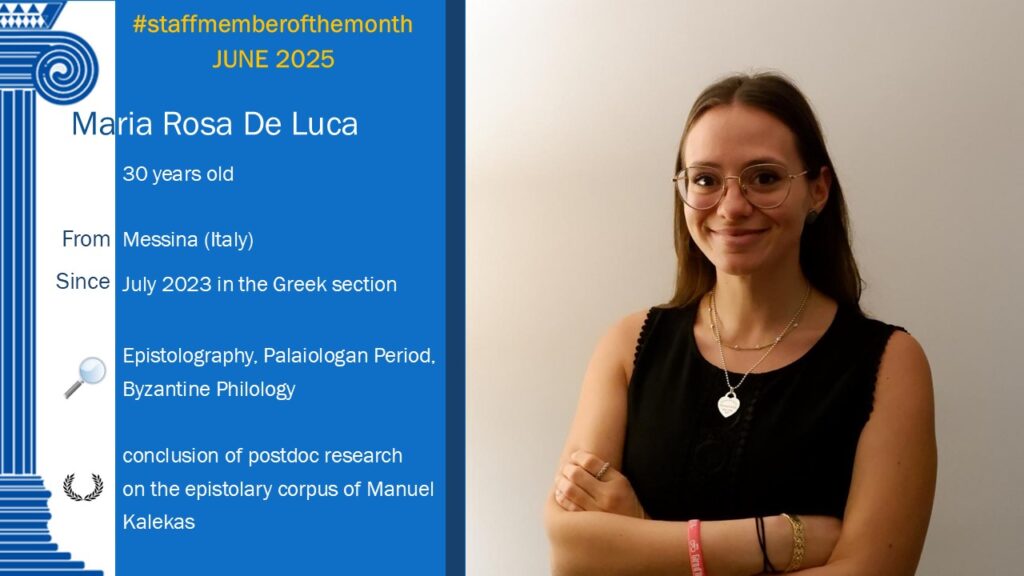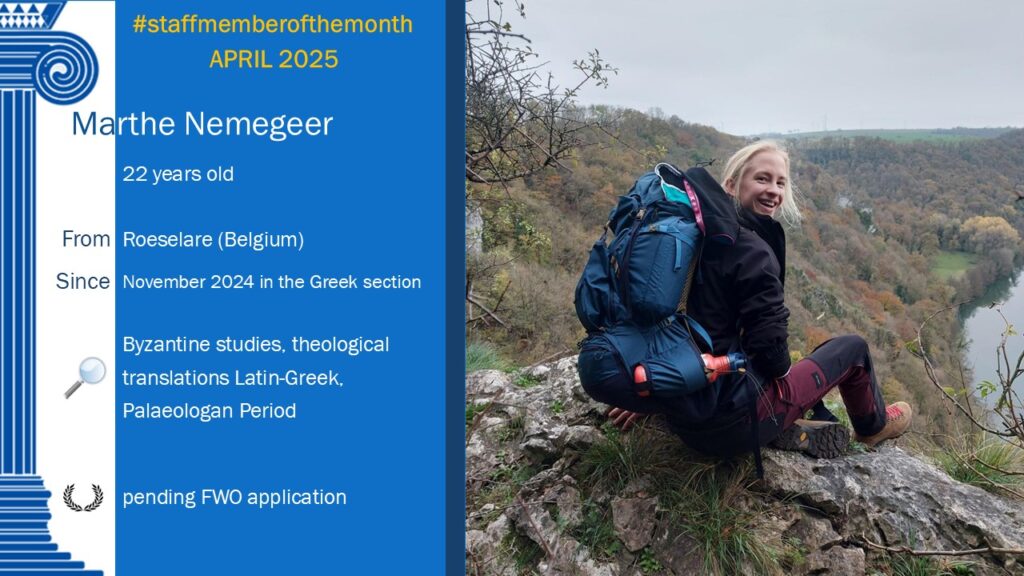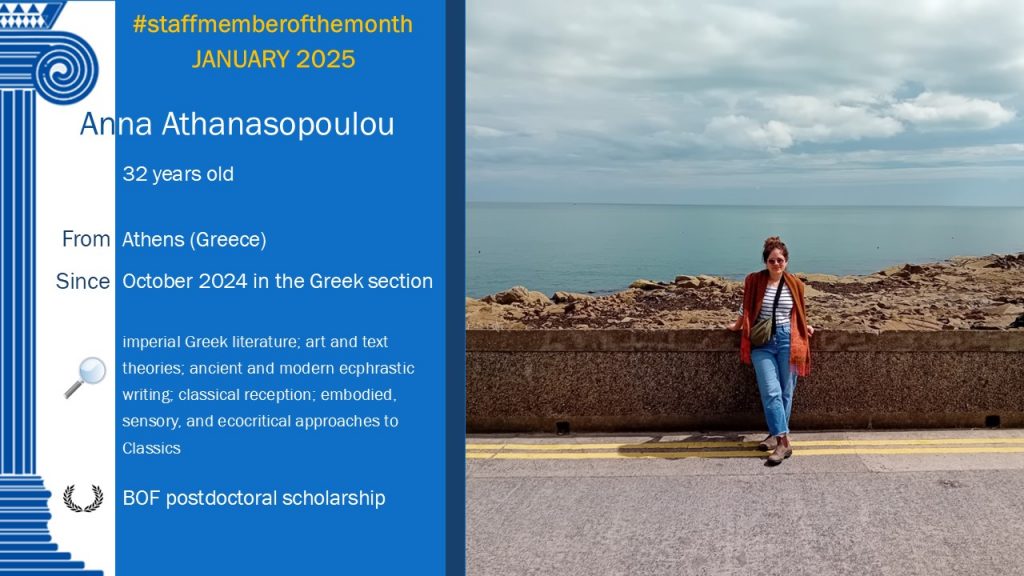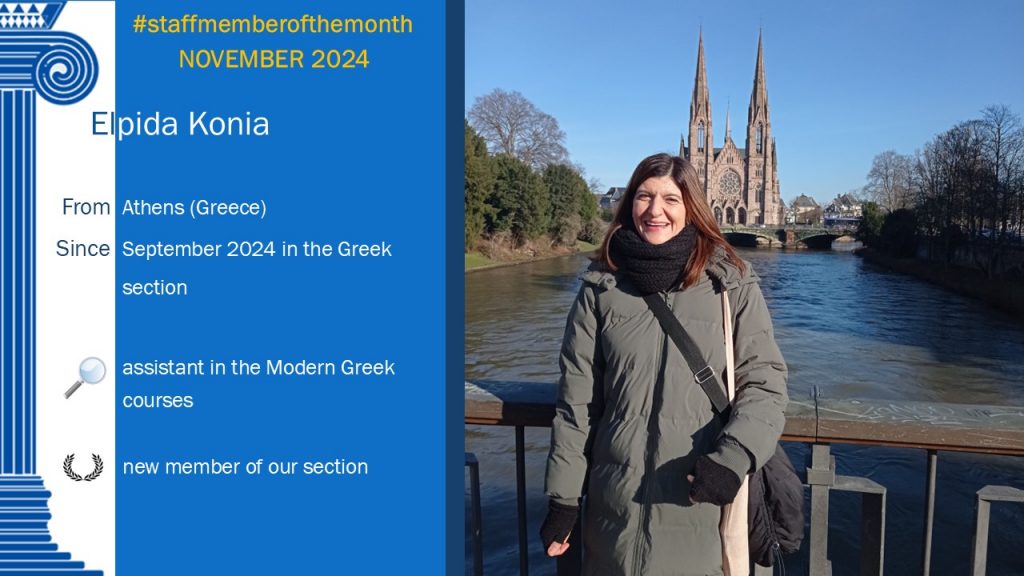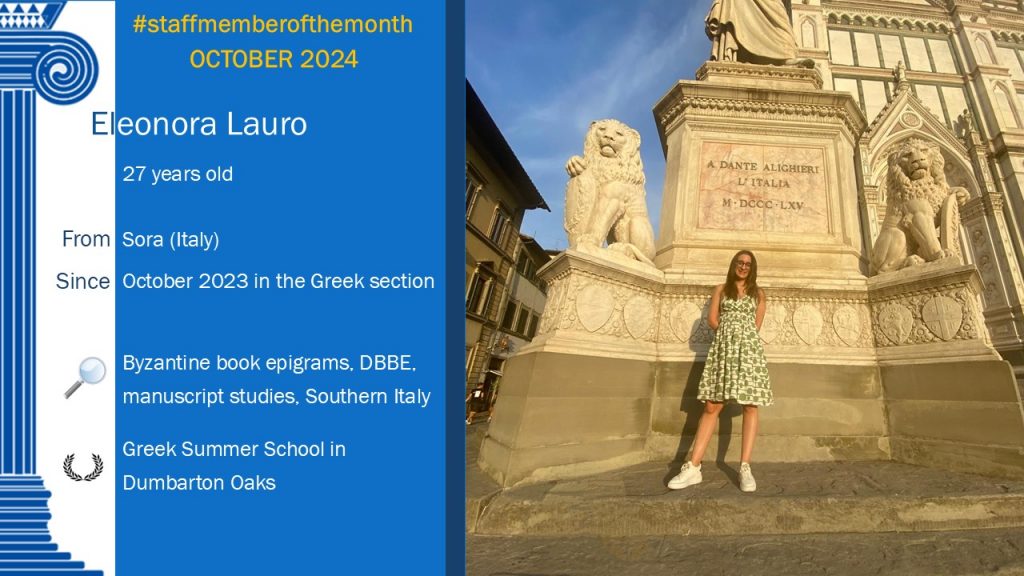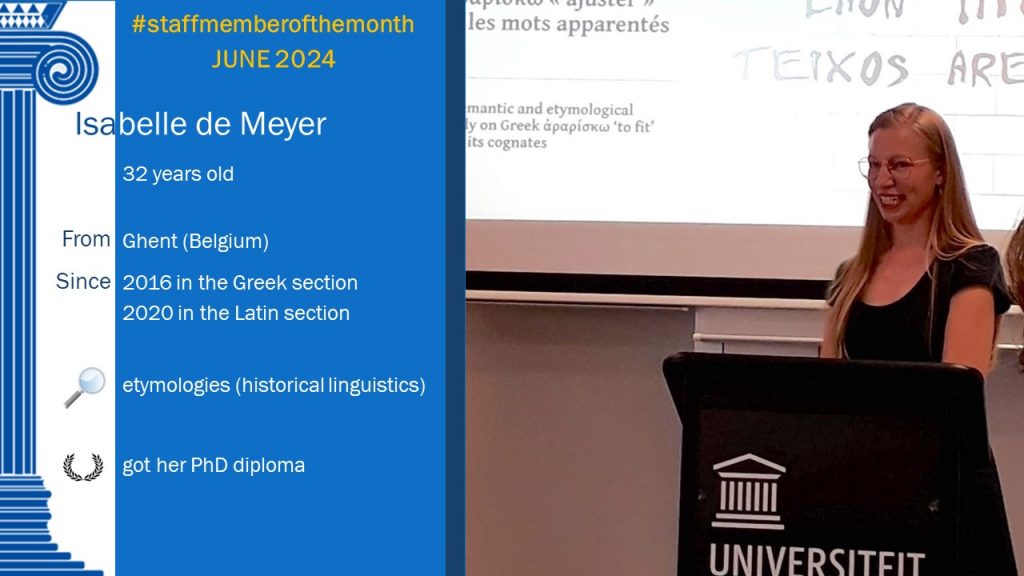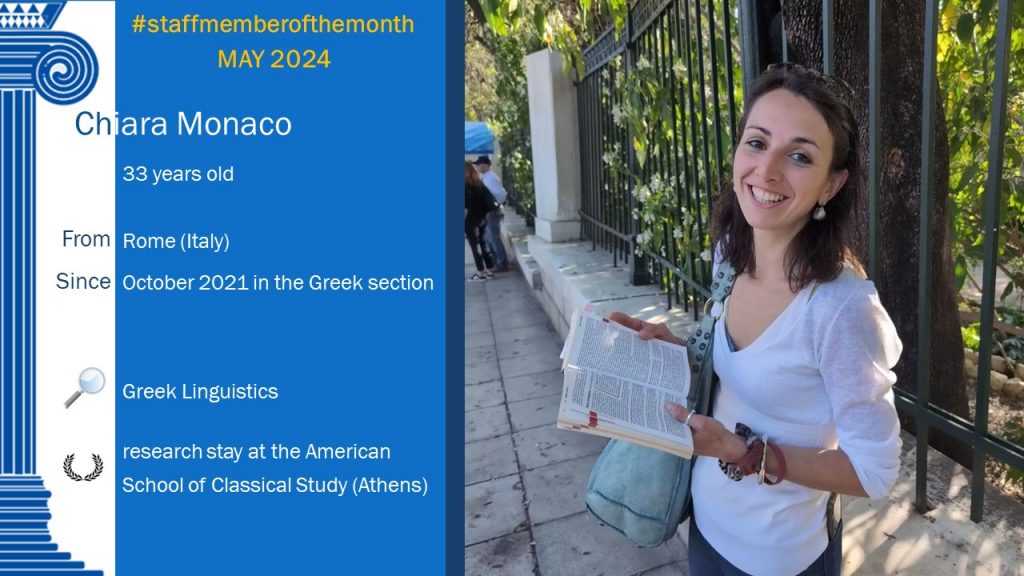Staff member of the month November 2025 is Francesca Samorì, who joined us from Ravenna! Francesca joined the Greek Section this month as an FWO Junior Postdoctoral Researcher, and we are delighted to welcome her to the team. Giulia Paoletti chatted to Francesca about her research, living in Ghent and her life outside of work!

Hi Francesca and welcome to the Greek Section! How has your first month in Ghent been? Any fun discoveries about Belgium that you didn’t expect?
Hi, thank you! My first month in Ghent has been great: considering all the getting-used-to tasks and the bureaucratic errands that were on my to-do-list, I’ve been adjusting to my new everyday life so much more easily than expected. I immediately felt welcomed at the university and in the city, and this played a very important role in making the transition smoother, I’m sure! I had been to Belgium a few times before, including Ghent, but getting to discover these places as a wannabe-local is an entirely different thing! One of the most amazing discoveries for me was how much the city of Ghent is interwoven with its natural surroundings; water and green spaces merge perfectly with the town, and the autumn colors make everything even more fascinating! I will seize the opportunity of living here to get to visit Belgium as much as possible. I’ve been to Bruges – because where else could you start? – but I can’t wait to see all the wonderful surprises this country has to offer!
One of the most amazing discoveries for me was how much the city of Ghent is interwoven with its natural surroundings; water and green spaces merge perfectly with the town, and the autumn colors make everything even more fascinating!
What are you working on during your postdoctoral fellowship?
With my FWO postdoctoral fellowship I will be pushing the boundaries of my expertise, which is really stimulating for me. In fact, until now I have been specializing in the intellectual and religious history of the late 13th-early 14th-century Byzantium, focusing on the religious controversy with the Latins and on the issue of the union of the Byzantine Church with the Church of Rome: therefore, I’ve always worked with prose texts, especially polemical treatises and historical chronicles. My new project, whose title is Book epigrams and manuscripts as vectors of late-Byzantine literary, political and ideological history (13th-15th cent.), will give me the opportunity to explore this crucial period through a different lens, the one pertaining to manuscript production and to the composition of book epigrams – that is to say the metrical inscriptions contained in these very same manuscripts. The DBBE team at our university is the ideal environment to carry out this research: through a multi-layered analysis of some of the most exemplary of these poems, I will hopefully unlock the historical potential of Book Epigrams and reflect on the way in which manuscripts shaped and were shaped by the political, cultural, and religious landscape of late Byzantium. In doing so, I aim to contribute to critically reevaluate the Palaeologan period (1261-1453), a highly disregarded phase in Byzantine history.
Is there a part of your research that gives you that ‘I’ll just work five more minutes…’ feeling?
Yes, absolutely! It usually happens when I feel that something is missing, or is not as clear as I would like it to be. It can be anything: a word whose translation is not quite satisfying, a historical reference that seems to elude me, or a challenging examination of a manuscripts. It’s like chasing the missing piece of a jigsaw: “just five more minutes, it must be here somewhere, I just have to look some more!”
I will hopefully unlock the historical potential of Book Epigrams and reflect on the way in which manuscripts shaped and were shaped by the political, cultural, and religious landscape of late Byzantium.
What do you enjoy doing outside of academia? Any hobbies or favourite activities since moving here?
I guess you could say that what I do in my free time resembles pretty much what most of us do outside of academia: just trying to relax and recharge, possibly with a practical activity that could help ease the mind and the eyes! I like to do yoga and go swimming, but also read a good book curled up in a blanket or go out with friends. As I said, I plan to visit Belgium as much as possible, so this year’s weekends will be mostly dedicated to exploring new places! But lately I also found myself particularly enjoying furnishing and decorating my new apartment, trying to personalize it according to my own taste. The big glass window of my living room inspired me to try again with gardening: my first attempts, in the past, were not entirely successful, but I hope this time I will be able to improve, so that one day I can enrich my windowsill with many plants… For now, I started with one, let’s see how it goes!

